Inside The New York Botanical Garden
Scott Mori
Posted in Science on January 24 2013, by Scott Mori
Scott A. Mori has been studying New World rain forests for nearly 40 years. He has witnessed an unrelenting reduction in the extent of the forests he studies and, as a result, has become concerned about their future. The following blog is based on a chapter in his recent book, Tropical Plant Collecting: From the Field to the Internet.
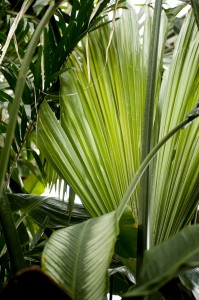 The future of plant and animal diversity in Latin American rain forests depends on an understanding of how fragile the plant and animal interactions found in this ecosystem are. The relationships between plants and animals in the tropics are so closely co-evolved that man’s utilization of tropical forests always results in loss of biodiversity. After a 40-year career of botanical exploration in the New World tropics, I conclude that human beings had little to do with the evolution of biodiversity anywhere on the planet, especially in the tropics, and, as Thomas Friedman said in his book Hot, Flat, and Crowded, “We are the only species in this vast web of life that no animal or plant in nature depends on for its survival–yet we depend on this whole web of life for our survival.”
The future of plant and animal diversity in Latin American rain forests depends on an understanding of how fragile the plant and animal interactions found in this ecosystem are. The relationships between plants and animals in the tropics are so closely co-evolved that man’s utilization of tropical forests always results in loss of biodiversity. After a 40-year career of botanical exploration in the New World tropics, I conclude that human beings had little to do with the evolution of biodiversity anywhere on the planet, especially in the tropics, and, as Thomas Friedman said in his book Hot, Flat, and Crowded, “We are the only species in this vast web of life that no animal or plant in nature depends on for its survival–yet we depend on this whole web of life for our survival.”
I believe that increasing human population and consumption throughout the world is not compatible with the preservation of the world’s biodiversity, but that rings especially true in the tropics. Moreover, many tropical forests grow on soils that are so nutrient poor they will never support high human populations without massive inputs of fertilizers and pesticides. If tropical areas are not productive enough today to provide significant resources to a world population of 6.5 billion, what makes humans think that they will be able to contribute to supporting a population of nine to 11 billion humans by 2050? The consumptive power of a resident of today’s Amazon rain forest is several orders of magnitude greater than that of the pre-Colombian inhabitants who based their economy on fertilizer- and pesticide-independent agricultural systems. In short, residents of the tropics–and the world in general–will not be able to protect biodiversity at the level it needs if both human population growth and consumption are not controlled.
Read More
Posted in Science on January 16 2013, by Scott Mori
Scott A. Mori has been studying New World rain forests for The New York Botanical Garden for over 35 years. He has witnessed an unrelenting reduction in the extent of the tropical forests he studies and as a result has become interested in the ecosystem services provided by them.
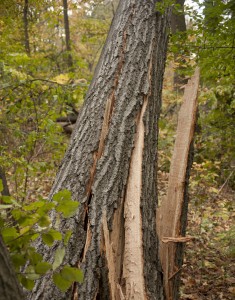 Hurricane Sandy left a path of fallen trees throughout its course, including over 100 at The New York Botanical Garden. Included in this devastation at the NYBG was a 101-foot-tall red oak thought to be 200 years old; this majestic tree provided the right habitat for spring-blooming plants in the Azalea Garden. Repeated storms with such force and frequency are making people ask if the storms could be related to global warming.
Hurricane Sandy left a path of fallen trees throughout its course, including over 100 at The New York Botanical Garden. Included in this devastation at the NYBG was a 101-foot-tall red oak thought to be 200 years old; this majestic tree provided the right habitat for spring-blooming plants in the Azalea Garden. Repeated storms with such force and frequency are making people ask if the storms could be related to global warming.
Climatologists have demonstrated that impressive swings in climate have taken place over the course of earth’s history—for example, the northeastern United States has been covered by glaciers during some periods and by tropical forests at other times. Because of these extremes of climate, it is difficult to say with certainty what the cause of such violent weather is. The proximate, or direct, cause of Hurricane Sandy was the convergence of three “normal” weather patterns: 1) a tropical storm with very strong winds coming from the south; 2) a trough of low pressure from the Arctic that strengthened the storm as it moved north; and 3) a block of high pressure in the northeastern Atlantic which forced the storm inland. In contrast, the more difficult question is: “What are the ultimate causes that make storms stronger and more frequent?”
Read More
Posted in Science on January 11 2013, by Scott Mori
Scott A. Mori has been studying New World rain forests for The New York Botanical Garden for over 35 years. He has witnessed an unrelenting reduction in the extent of the tropical forests he studies and as a result has become interested in the ecosystem services provided by them.
Manisha Sashital, a student in Environmental Engineering at Carnegie Mellon University, worked on a botanical glossary under the supervision of Dr. Mori as an intern at the Garden this past summer.
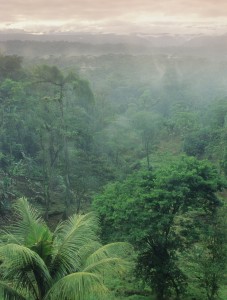 Just like languages, the sciences have vocabularies that must be mastered before their literature can be understood. Without understanding vocabulary, one cannot speak or write a language—just like one can not understand the morphology and anatomy of plants; their ecological relationships with other plants and animals; and their interactions with the environment in which they live without understanding the terms that describe the features of plants and their interactions. Learning the terminology of Botany is frustrating to beginners and experienced botanists alike because the vocabulary is vast, there are many synonyms for the same terms, and terms are a combination of Latin, Greek, and English words. There are numerous botanical glossaries available, for example the classics: A Glossary of Botanical Terms by B. D. Jackson and Botanical Latin by William T. Stern, and too many others to mention in this blog. Why then is there a need for another glossary?
Just like languages, the sciences have vocabularies that must be mastered before their literature can be understood. Without understanding vocabulary, one cannot speak or write a language—just like one can not understand the morphology and anatomy of plants; their ecological relationships with other plants and animals; and their interactions with the environment in which they live without understanding the terms that describe the features of plants and their interactions. Learning the terminology of Botany is frustrating to beginners and experienced botanists alike because the vocabulary is vast, there are many synonyms for the same terms, and terms are a combination of Latin, Greek, and English words. There are numerous botanical glossaries available, for example the classics: A Glossary of Botanical Terms by B. D. Jackson and Botanical Latin by William T. Stern, and too many others to mention in this blog. Why then is there a need for another glossary?
The answer is that electronic glossaries provide those with an interest in botany access to more information than hard copy publications. For example, electronic glossaries can be illustrated with more images than hard copy publications because of the high costs of printing, especially of images in color, and they can be immediately corrected when a mistake is brought to the attention of the authors. Electronic glossaries are instantaneously available to anyone with a connection to the internet, and links can be made to definitions of other terms related to a particular term under consideration. In addition, electronic glossaries can be attached to electronic keys to break down complex terminology used to identify unknown plants; for example, if a choice in a key asks if the ovary of a flower is superior or inferior, a link can be provided to these terms in a glossary where they are defined and illustrated.
Read More
Posted in Around the Garden on September 26 2011, by Scott Mori
 Manisha Sashital, a student in Environmental Engineering and Environmental Policy at Carnegie Mellon University, worked on a botanical glossary under the supervision of Dr. Mori at the Garden this summer. As part of her internship she prepared a cartoon illustrating the relationship between photosynthesis and respiration.
Manisha Sashital, a student in Environmental Engineering and Environmental Policy at Carnegie Mellon University, worked on a botanical glossary under the supervision of Dr. Mori at the Garden this summer. As part of her internship she prepared a cartoon illustrating the relationship between photosynthesis and respiration.
 Scott A. Mori has been studying New World rain forest plants for The New York Botanical Garden for over 35 years. His interest in tropical forests as carbon sinks have been stimulated by his studies of trees in old growth tropical forests.
Scott A. Mori has been studying New World rain forest plants for The New York Botanical Garden for over 35 years. His interest in tropical forests as carbon sinks have been stimulated by his studies of trees in old growth tropical forests.
Global warming has become one of the planet’s deadliest threats. Since the Industrial Revolution, carbon dioxide concentrations have risen from 280 ppm to nearly 390 ppm, with the potential to reach 550 ppm by 2050 if carbon emissions from fossil fuel combustion are not controlled. The earth has experienced major warming three times; but the Cretaceous warming period took place over millions of years and the Paleocene/Eocene warming happened over thousands of years. In contrast, today’s temperature changes are happening over decades. As a result, many species, perhaps even humans, may not be able to adapt to such rapid and high increases in temperature. One concern that is generally unknown to the public is that photosynthesis, the source of energy for nearly all organisms on the planet, shuts down at around 104° F. Mankind’s extreme disruption of the carbon cycle is causing and will continue to cause serious consequences for life on earth.
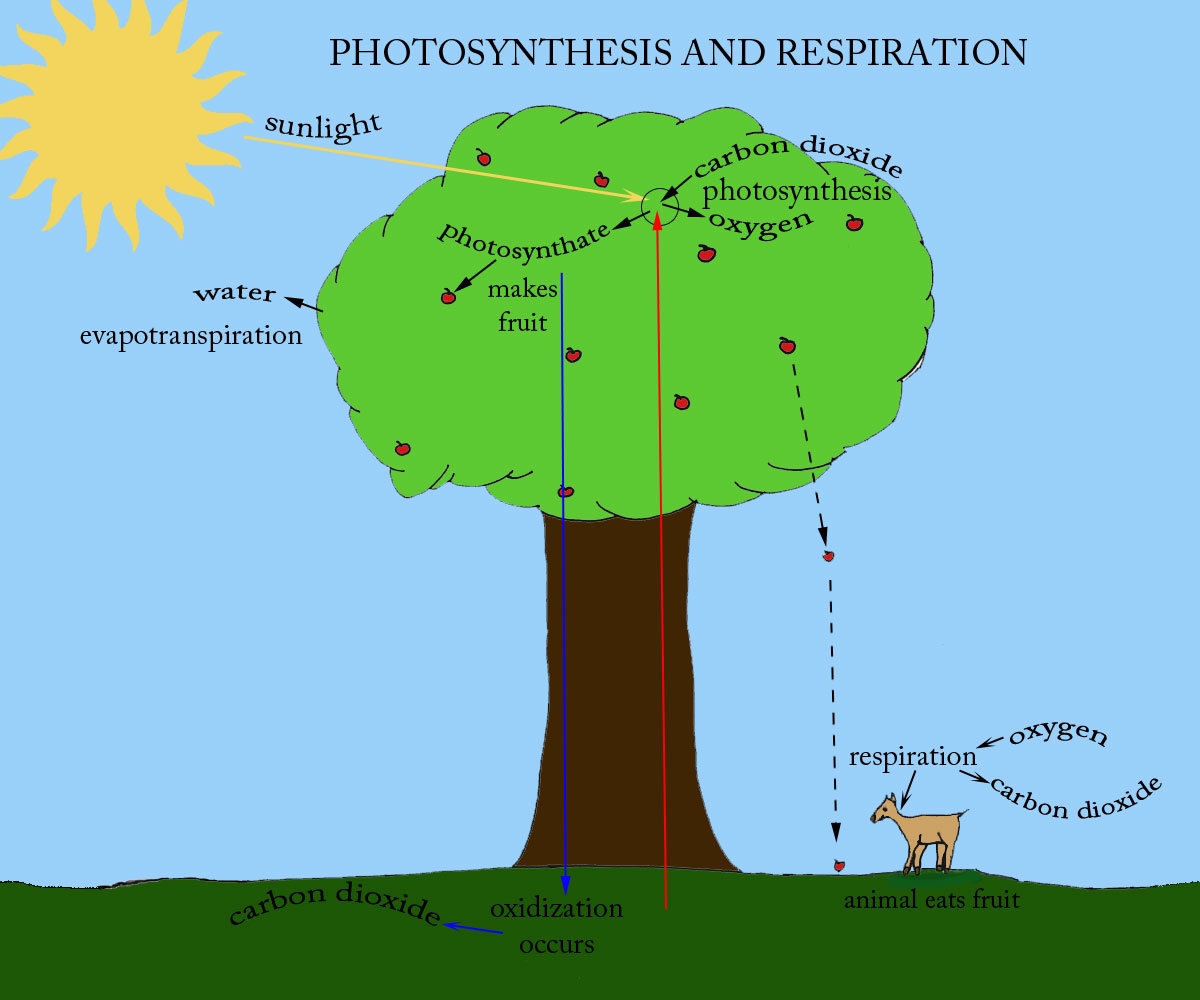 Carbon dioxide levels contribute to global warming through the greenhouse effect. Greenhouse gases trap radiation from the sun in the atmosphere, which causes global temperatures to rise because the radiation is not reflected back out of the atmosphere. The reason for today’s increased atmospheric carbon levels can be attributed to the combustion of fuels used for the production of electricity and in transportation, both of which are essential to modern societies; as well as to cutting and burning forests throughout the world. Since there is no precedent for the rapidity of current temperature increases, it is impossible for humans to predict which areas of the world will be affected and at what magnitude. The unpredictability of global warming makes it an especially serious environmental problem.
Carbon dioxide levels contribute to global warming through the greenhouse effect. Greenhouse gases trap radiation from the sun in the atmosphere, which causes global temperatures to rise because the radiation is not reflected back out of the atmosphere. The reason for today’s increased atmospheric carbon levels can be attributed to the combustion of fuels used for the production of electricity and in transportation, both of which are essential to modern societies; as well as to cutting and burning forests throughout the world. Since there is no precedent for the rapidity of current temperature increases, it is impossible for humans to predict which areas of the world will be affected and at what magnitude. The unpredictability of global warming makes it an especially serious environmental problem.
Rain forests as well as other vegetation types play an important role in reducing the levels of carbon dioxide in the atmosphere. Annually, plants in tropical rain forests around the world take in millions of tons of carbon dioxide and release millions of tons of oxygen through photosynthesis, and this balances the respiration of microbes, plants, and animals, which take in oxygen and expel carbon dioxide. As seen in the accompanying cartoon, plants take in carbon dioxide and water and use the energy of the sun to create carbohydrates that are, in turn, oxidized to produce the energy needed for plants to sustain themselves. The carbohydrates are also the building blocks plants use to make leaves, stems, flowers, and fruits. Oxygen, the byproduct of respiration, is used by organisms to break down ingested carbohydrates to produce the energy needed for them to grow and reproduce. Mankind’s extreme disruption of the carbon cycle is and will continue to have serious consequences for life on earth.
Read More
Posted in Science on January 5 2011, by Plant Talk
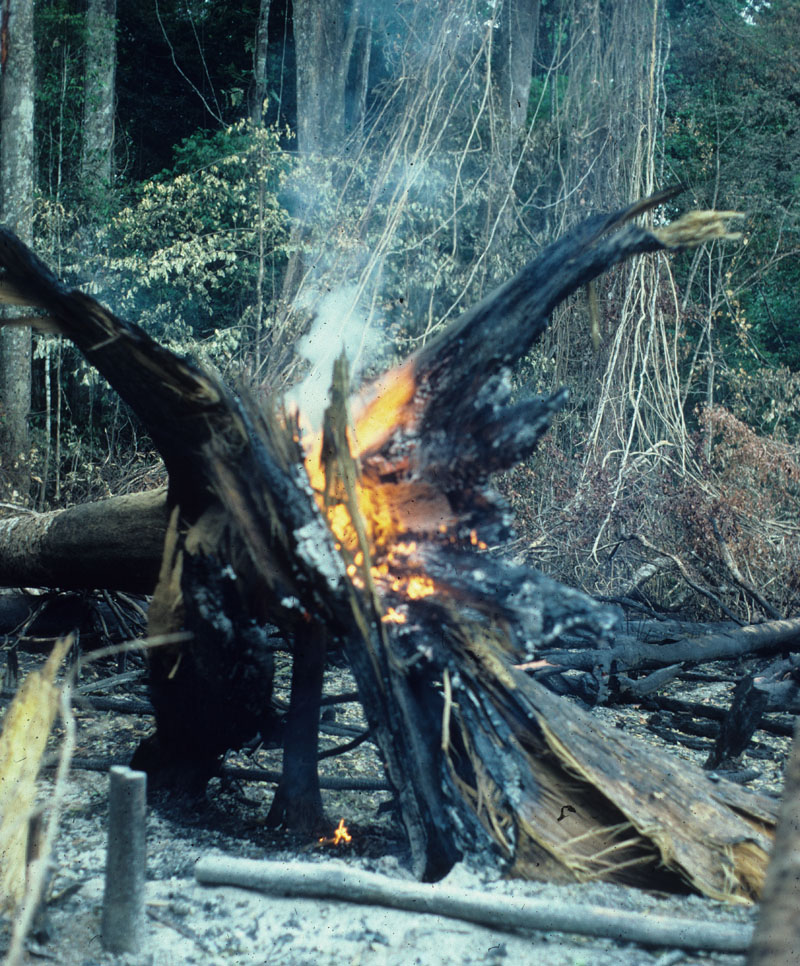 Deforestation followed by fires for creating agricultural fields and pasture releases carbon dioxide into the atmosphere at such an accelerated rate in the tropics that it is a major contributor to global warming. Photo by Scott Mori
Deforestation followed by fires for creating agricultural fields and pasture releases carbon dioxide into the atmosphere at such an accelerated rate in the tropics that it is a major contributor to global warming. Photo by Scott MoriThere are many different types of vegetation in the New World tropics. But rather than being a homogeneous whole, what grows where and when in these tropics is determined to a large extent by water availability and temperature variation. Climate change could potentially have a drastic impact on this region, especially on the rain forests. Liebig’s Law of the Minimum states that plant or animal growth is controlled by the scarcest resource in the environment; this is known as a limiting factor. For example, if a soil possesses all nutrients needed for plant growth except potassium, then the paucity of that nutrient will limit the potential growth of all plants except those that can grow in potassium-poor soils. Potassium is therefore a limiting factor for that soil.
More on the application of Liebig's Law to the destruction of Amazonian rainforests below.
Posted in Science on November 4 2010, by Plant Talk
Paying for Benefits Provided by Natural Systems May Help in Conservation
 |
Scott A. Mori, Ph.D., Nathaniel Lord Britton Curator of Botany, has been studying New World rain forests for The New York Botanical Garden for over 35 years. He has witnessed an unrelenting reduction in the extent of the tropical forests he studies and as a result has become interested in the ecosystem services provided by them. |
 |
Li Gao, a biology student at SUNY Binghamton, studied ecosystem services under the supervision of Dr. Mori as an intern at the Garden this past summer. |
Photo by C. Gracie: Fish harvested from nature is an example of an ecosystem service.
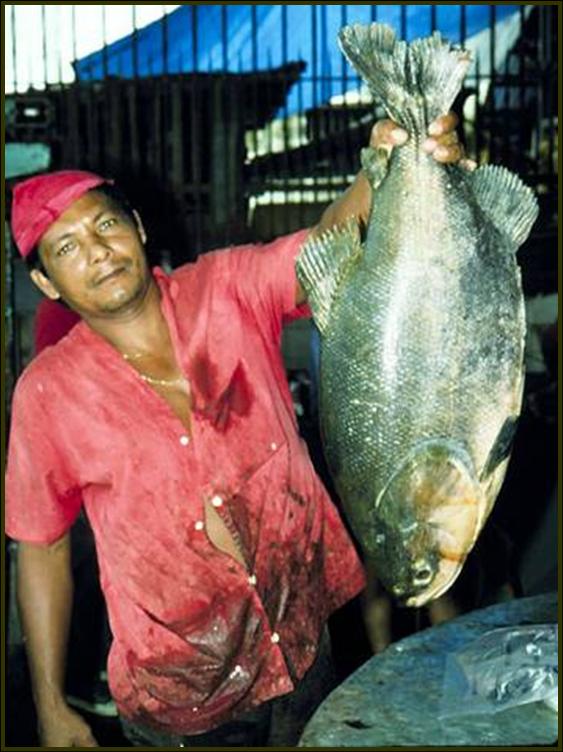 For the past three years, the Institute of Systematic Botany of The New York Botanical Garden has been preparing an inventory of the plants of the Osa Peninsula of Costa Rica. Our goal is to document the native plants growing on the Osa through collections and images, most of which are the result of the botanical explorations of Costa Rican botanist Reinaldo Aguilar. The Osa is the last large expanse of lowland rain forest along the Pacific coast of all of Mesoamerica, and is a place where jaguars, large flocks of scarlet macaws, nesting sea turtles, and over 2,000 species of plants (821 of which are trees) can still be seen in their natural habitat.
For the past three years, the Institute of Systematic Botany of The New York Botanical Garden has been preparing an inventory of the plants of the Osa Peninsula of Costa Rica. Our goal is to document the native plants growing on the Osa through collections and images, most of which are the result of the botanical explorations of Costa Rican botanist Reinaldo Aguilar. The Osa is the last large expanse of lowland rain forest along the Pacific coast of all of Mesoamerica, and is a place where jaguars, large flocks of scarlet macaws, nesting sea turtles, and over 2,000 species of plants (821 of which are trees) can still be seen in their natural habitat.
Tropical forests boost local economies through the sale of tropical forest products like timber, chocolate, and Brazil nuts, but in the process of producing these products part of the original forest is modified, often harming the plants and animals that live there. Tropical forests, though, have value far beyond that derived from these obvious harvests. The fish found in their rivers and lakes and the animals living in their forests provide sources of protein for the local population. The rich diversity of plants and animals found in tropical forests as well as their scenic beauty make them a favorite destination for tourists. In addition, tropical forests are reservoirs of genetic diversity, play an important role in maintaining the stability of the world’s atmospheric gases, and help control hydrological cycles on local, regional, and global scales.
Read More
Posted in Science on September 15 2009, by Plant Talk
 |
Scott A. Mori, Ph.D., Nathaniel Lord Britton Curator of Botany, has been studying New World rain forests for The New York Botanical Garden for over 30 years. Over the course of his career, Dr. Mori has witnessed an unrelenting reduction in the extent of the tropical forests he studies. |
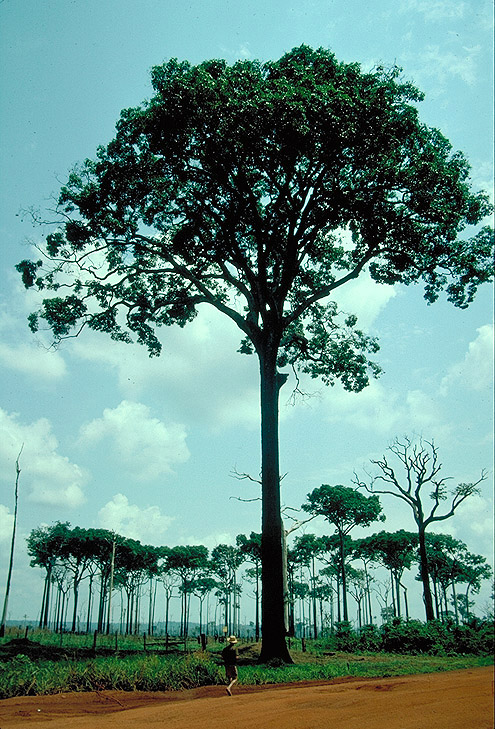 On August 22, an image showing a small green patch of forest in the midst of a treeless area prepared for soybean cultivation appeared on the front page of The New York Times. The accompanying article explained that the fertile soils underlying forests in the state of Mato Grosso, Brazil, are suitable for supporting large soybean plantations. As evidence of the magnitude of the forest destruction, the author noted that an increasing demand for Brazilian soybeans led to the conversion of 700 square miles of forest to soybean fields in that state during the last five months of 2007 alone!
On August 22, an image showing a small green patch of forest in the midst of a treeless area prepared for soybean cultivation appeared on the front page of The New York Times. The accompanying article explained that the fertile soils underlying forests in the state of Mato Grosso, Brazil, are suitable for supporting large soybean plantations. As evidence of the magnitude of the forest destruction, the author noted that an increasing demand for Brazilian soybeans led to the conversion of 700 square miles of forest to soybean fields in that state during the last five months of 2007 alone!
The future of plant and animal diversity in Latin American forests depends on an understanding of how fragile the plant/animal interactions of tropical ecosystems are and the role human consumption plays in altering natural ecosystems. The relationships between plants and animals in the tropics are so closely co-evolved that man’s utilization of tropical forests almost always results in some loss of biodiversity. Soybean cultivation is an extreme example, because in this agricultural system soybeans entirely displace the plants and animals that formerly occupied the destroyed forests.
Trees remaining after forest destruction such as the Brazil nut tree above, photographed by W. W. Thomas, do not effectively reproduce. While this tree and others like it may still live for many years, they no longer produce the next generation of trees because the forest conditions needed for the pollination of their flowers, the dispersal of their seeds, and the growth of their seedlings into adult trees no longer exist.
Read More
Posted in Science on August 13 2009, by Plant Talk
 |
Scott A. Mori, Ph.D., Nathaniel Lord Britton Curator of Botany, has been studying New World rain forests for The New York Botanical Garden for over 30 years. This evening from 6 to 9 p.m., as part of the Edible Evenings series of The Edible Garden, he will hold informal conversations about chocolate, Brazil nuts, and cashews—some of his research topics—during Café Scientifique. |
The Brazil nut is known to most people as the largest nut in a can of mixed party nuts, but other than that, most people know little about it, including that it comes from an Amazonian rain forest tree of the same name or that it is really a seed, not a nut.
The Brazil nut was first discovered by Alexander von Humboldt and Aime Bonpland on the Orinoco River in Venezuela and made known to the scientific world as Bertholletia excelsa in1808. The generic name honors a famous French chemist and friend of Humboldt’s and excelsa refers to the majestic growth form of the tree. Although discovered in Venezuela, this species became known as the Brazil nut because Brazil was, and still is, a major exporter of the seeds.
For the past 35 years my research has focused on the classification and ecology of species of the Brazil nut family. The Brazil nut itself is only one of what I estimate to be about 250 species of that family found in the forests of Central and South America. This number includes nearly 50 species that do not have scientific names, mostly because collectors are usually not willing to climb into tall trees to gather the specimens needed to document their existence. My research on the Brazil nut family has taken me on many expeditions to the rain forests of the New World, and what I have learned about this family of trees can be found on The Lecythidaceae Pages.
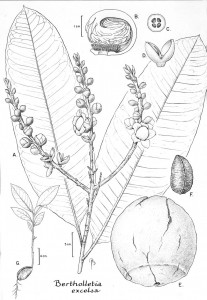 The Brazil nut flower is large, roughly two inches in diameter, and fleshy, and the male part of the flower has a structure not found in any other plant family in the world. (See illustration at right by Bobbi Angell.) The fertile stamens are arranged in a ring that surrounds the style at the summit of the ovary. This ring has a prolongation on one side that is expanded at the apex to form a hood-like structure. At the apex of the hood are appendages that turn in toward the interior of the flower.
The Brazil nut flower is large, roughly two inches in diameter, and fleshy, and the male part of the flower has a structure not found in any other plant family in the world. (See illustration at right by Bobbi Angell.) The fertile stamens are arranged in a ring that surrounds the style at the summit of the ovary. This ring has a prolongation on one side that is expanded at the apex to form a hood-like structure. At the apex of the hood are appendages that turn in toward the interior of the flower.
A small amount of nectar is produced at the bases of these appendages. The fleshy “hood” presses directly onto the summit of the ovary and the six petals form an overlapping “cup” that blocks entry to the flower to all but the co-evolved pollinators.
The Brazil nut is known to be pollinated only by large bees with enough strength to lift up the hood and enter the flower. These bees are presumably rewarded for their efforts by the nectar they collect from the interior of the hood. When the bees are in the flower, pollen rubs off onto their heads and backs from where it is transferred to the stigma of subsequent flowers visited.
Read More
Posted in Exhibitions, Science, The Edible Garden on July 30 2009, by Plant Talk
 |
Scott A. Mori, Ph.D., Nathaniel Lord Britton Curator of Botany, has been studying New World rain forests at The New York Botanical Garden for over 30 years. As part of The Edible Garden, he will hold informal conversations about chocolate, Brazil nuts, and cashews—some of his research topics—during Café Scientifique on August 13. |
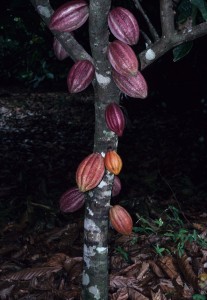 The chocolate that we eat and drink is one of the most complicated foods utilized by mankind. Not only did it co-evolve in the rain forests of the New World with still unidentified pollinators and with the help of animals that disperse its seeds, but it also undergoes an amazing transformation when it is processed, going from inedible, bitter seeds to the delicious chocolate products that most of us enjoy.
The chocolate that we eat and drink is one of the most complicated foods utilized by mankind. Not only did it co-evolve in the rain forests of the New World with still unidentified pollinators and with the help of animals that disperse its seeds, but it also undergoes an amazing transformation when it is processed, going from inedible, bitter seeds to the delicious chocolate products that most of us enjoy.
I became fascinated with the natural history and cultivation of chocolate while working for the Cocoa Research Institute in southern Bahia, Brazil, from 1978 to 1980. I directed a program of plant exploration in what was then, botanically, one of the least explored regions of the New World tropics. During those two years, I made 4,500 botanical collections, including many species new to science and many from cocoa plantations.
The scientific name of the chocolate tree is Theobroma cacao L. Theobroma means “food-of-the-gods” in Greek; cacao is derived from the Aztec common name chocolatl; and “L.” is the abbreviation for Linnaeus, the botanist who coined the scientific name of the chocolate tree. The genus Theobroma includes 22 species.
One of the unsolved mysteries of the natural history of chocolate trees is its pollinators. Most varieties of chocolate are self-incompatible, which means that pollination of the flowers of a given plant with pollen from the same plant does not yield fruit. There are, however, some varieties that are self-compatible—the single tree growing in the Enid A. Haupt Conservatory at NYBG is proof, because it sets fruit. Nevertheless, for most chocolate trees to produce fruit, pollen has to be moved from one tree to the next. This does not happen frequently in plantations, because the average tree produces between just 20 and 40 fruits each year from the thousands of flowers that open on the tree.
Thus, a limiting factor in the production of chocolate is successful pollination, and because this has economic implications there has been considerable research about how to increase the production of chocolate by enhancing pollination. Some researchers believe midges (minute, mosquito-like flies) are the pollinators of chocolate trees. But the complexity and relatively large size of chocolate flowers in comparison to the size of midges indicates that they might be occasional visitors rather than the true or only pollinators of chocolate.
Read More
Posted in People, Science on March 4 2009, by Plant Talk
Batty for Brazil Nuts
During The Orchid Show: Brazilian Modern, Plant Talk takes a look at some of the research and conservation efforts of The New York Botanical scientists whose work is focused in Brazil. This interview was conducted by Jessica Blohm, Interpretive Specialist for Public Education.
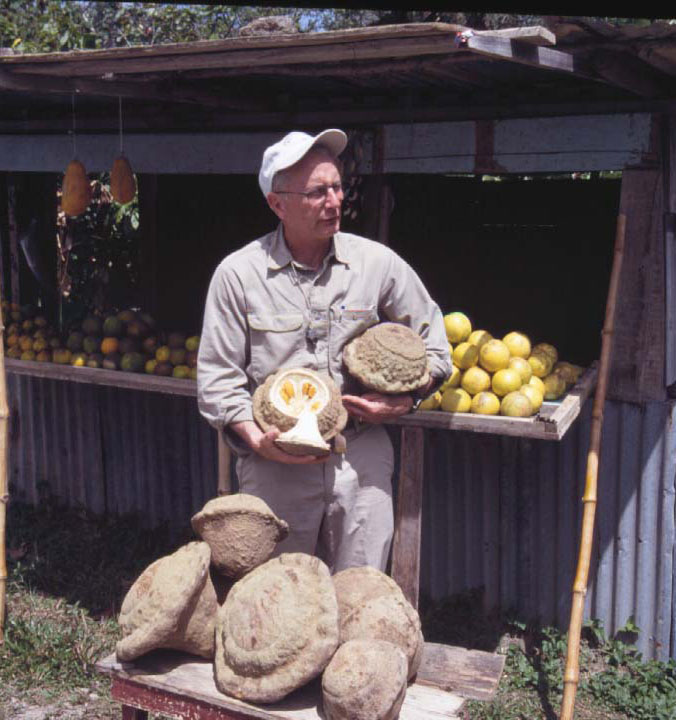 Dr. Scott Mori holds the giant, woody fruits of the
Dr. Scott Mori holds the giant, woody fruits of the sapucaia,
a species belonging to the Brazil nut family.
Photo by Carol Gracie“The diversity of Brazil is amazing,” Botanical Garden scientist Dr. Scott Mori says. “I grew up in Wisconsin, where there are 74 different species of trees in the entire state. In Brazil, there can be 300 different species of trees in the area the size of two American football fields. That means that every second tree that you look at is something different.”
Scott, who once met Roberto Burle Marx, the inspiration for this year’s Orchid Show, at a party in Brazil, is helping to preserve the Brazil nut family (Lecythidaceae), which includes the Brazil nut we eat and several hundred other species of magnificent, towering trees. Brazil nut seeds are easy to harvest because they are trapped inside woody, cannonball-like fruits that fall from the tree at maturity. These “packages of seeds” are simply picked from the ground and broken open to yield a harvest of 20 to 30 Brazil nuts per fruit. Brazil nuts are an economically important, non-timber forest product in the Brazilian Amazon.
Over the course of 40 years studying New World rain forests, Scott, the Nathaniel Lord Britton Curator of Botany, has described 51 new species of the Brazil nut family. His research has demonstrated many co-evolutionary relationships among species of the Brazil nut family and different animals, including bats and bees. Understanding these plant-animal interactions is an important part of understanding the plant’s biology and how best to conserve these plants. Scott co-authored Seed Dispersal by Bats in the Neotropics, which will be released in late April by NYBG Press.
“I am a hard-core scientist,” says Scott. “I go out into the field, collect plants, bring the specimens back here, and study the specimens.” This increased understanding of tropical plants, how they function and what they need to survive, often leads to efforts to conserve the rain forest habitats in which they are found.
Scott has shared his expertise on the Brazilian Amazon with Botanical Garden supporters on dozens of ecotours, combining informal natural history instruction with a myriad of other activities such as swimming in the tea-colored waters of the Rio Negro, hiking in the rain forest, fishing for piranha, early morning birding by canoe, and nocturnal trips for alligator spotting. He will lead his next ecotour, Ten Days in Brazil, October 10–21 with Botanical Garden President Gregory Long and James Miller, Ph.D., Dean and Vice President for Science. For additional information contact Brian Boom, Ph.D., Special Assistant to the President, at bboom@nybg.org or 718.817.8708.
 The future of plant and animal diversity in Latin American rain forests depends on an understanding of how fragile the plant and animal interactions found in this ecosystem are. The relationships between plants and animals in the tropics are so closely co-evolved that man’s utilization of tropical forests always results in loss of biodiversity. After a 40-year career of botanical exploration in the New World tropics, I conclude that human beings had little to do with the evolution of biodiversity anywhere on the planet, especially in the tropics, and, as Thomas Friedman said in his book Hot, Flat, and Crowded, “We are the only species in this vast web of life that no animal or plant in nature depends on for its survival–yet we depend on this whole web of life for our survival.”
The future of plant and animal diversity in Latin American rain forests depends on an understanding of how fragile the plant and animal interactions found in this ecosystem are. The relationships between plants and animals in the tropics are so closely co-evolved that man’s utilization of tropical forests always results in loss of biodiversity. After a 40-year career of botanical exploration in the New World tropics, I conclude that human beings had little to do with the evolution of biodiversity anywhere on the planet, especially in the tropics, and, as Thomas Friedman said in his book Hot, Flat, and Crowded, “We are the only species in this vast web of life that no animal or plant in nature depends on for its survival–yet we depend on this whole web of life for our survival.”


 Manisha Sashital, a student in Environmental Engineering and Environmental Policy at Carnegie Mellon University, worked on a botanical glossary under the supervision of Dr. Mori at the Garden this summer. As part of her internship she prepared a cartoon illustrating the relationship between photosynthesis and respiration.
Manisha Sashital, a student in Environmental Engineering and Environmental Policy at Carnegie Mellon University, worked on a botanical glossary under the supervision of Dr. Mori at the Garden this summer. As part of her internship she prepared a cartoon illustrating the relationship between photosynthesis and respiration. Scott A. Mori has been studying New World rain forest plants for The New York Botanical Garden for over 35 years. His interest in tropical forests as carbon sinks have been stimulated by his studies of trees in old growth tropical forests.
Scott A. Mori has been studying New World rain forest plants for The New York Botanical Garden for over 35 years. His interest in tropical forests as carbon sinks have been stimulated by his studies of trees in old growth tropical forests.







 Dr. Scott Mori holds the giant, woody fruits of the sapucaia, a species belonging to the Brazil nut family.
Dr. Scott Mori holds the giant, woody fruits of the sapucaia, a species belonging to the Brazil nut family.